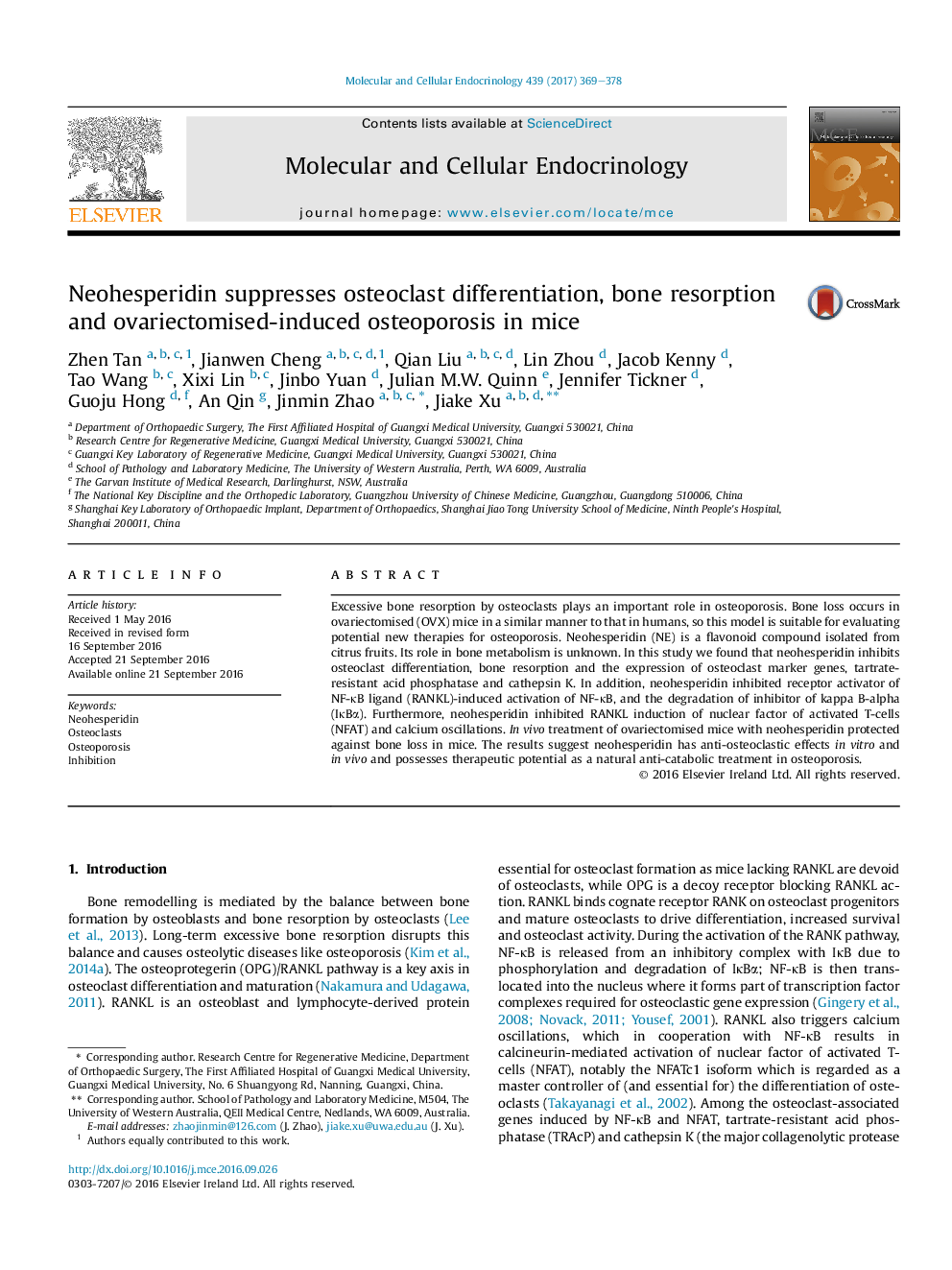| Article ID | Journal | Published Year | Pages | File Type |
|---|---|---|---|---|
| 5534329 | Molecular and Cellular Endocrinology | 2017 | 10 Pages |
â¢Neohesperidin inhibits osteoclast differentiation.â¢Neohesperidin inhibits osteoclast-mediated bone resorption.â¢Neohesperidin inhibits the development of osteoporosis in OVX mice.
Excessive bone resorption by osteoclasts plays an important role in osteoporosis. Bone loss occurs in ovariectomised (OVX) mice in a similar manner to that in humans, so this model is suitable for evaluating potential new therapies for osteoporosis. Neohesperidin (NE) is a flavonoid compound isolated from citrus fruits. Its role in bone metabolism is unknown. In this study we found that neohesperidin inhibits osteoclast differentiation, bone resorption and the expression of osteoclast marker genes, tartrate-resistant acid phosphatase and cathepsin K. In addition, neohesperidin inhibited receptor activator of NF-κB ligand (RANKL)-induced activation of NF-κB, and the degradation of inhibitor of kappa B-alpha (IκBα). Furthermore, neohesperidin inhibited RANKL induction of nuclear factor of activated T-cells (NFAT) and calcium oscillations. In vivo treatment of ovariectomised mice with neohesperidin protected against bone loss in mice. The results suggest neohesperidin has anti-osteoclastic effects in vitro and in vivo and possesses therapeutic potential as a natural anti-catabolic treatment in osteoporosis.
